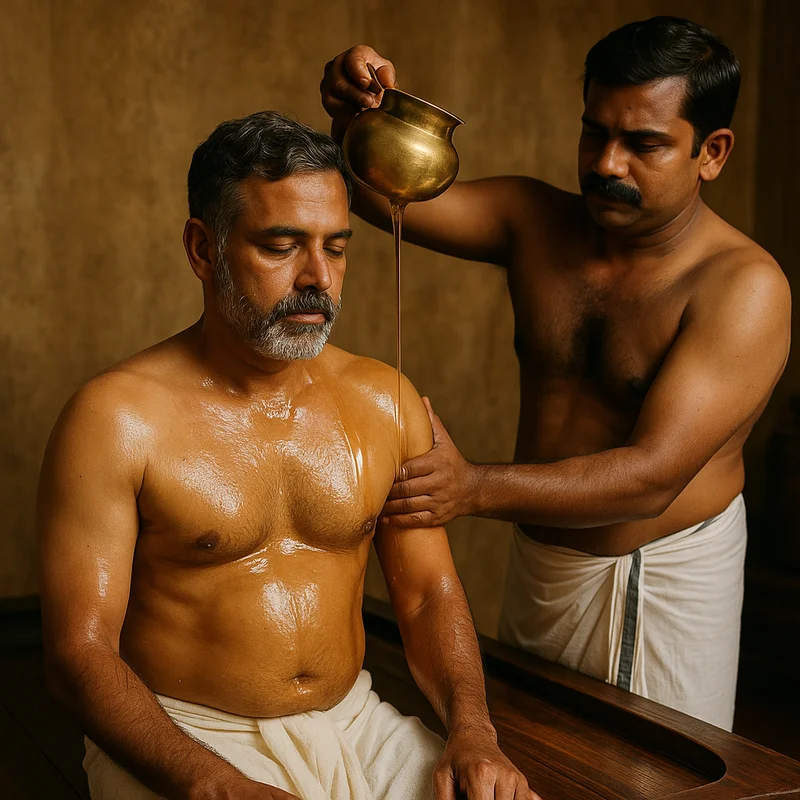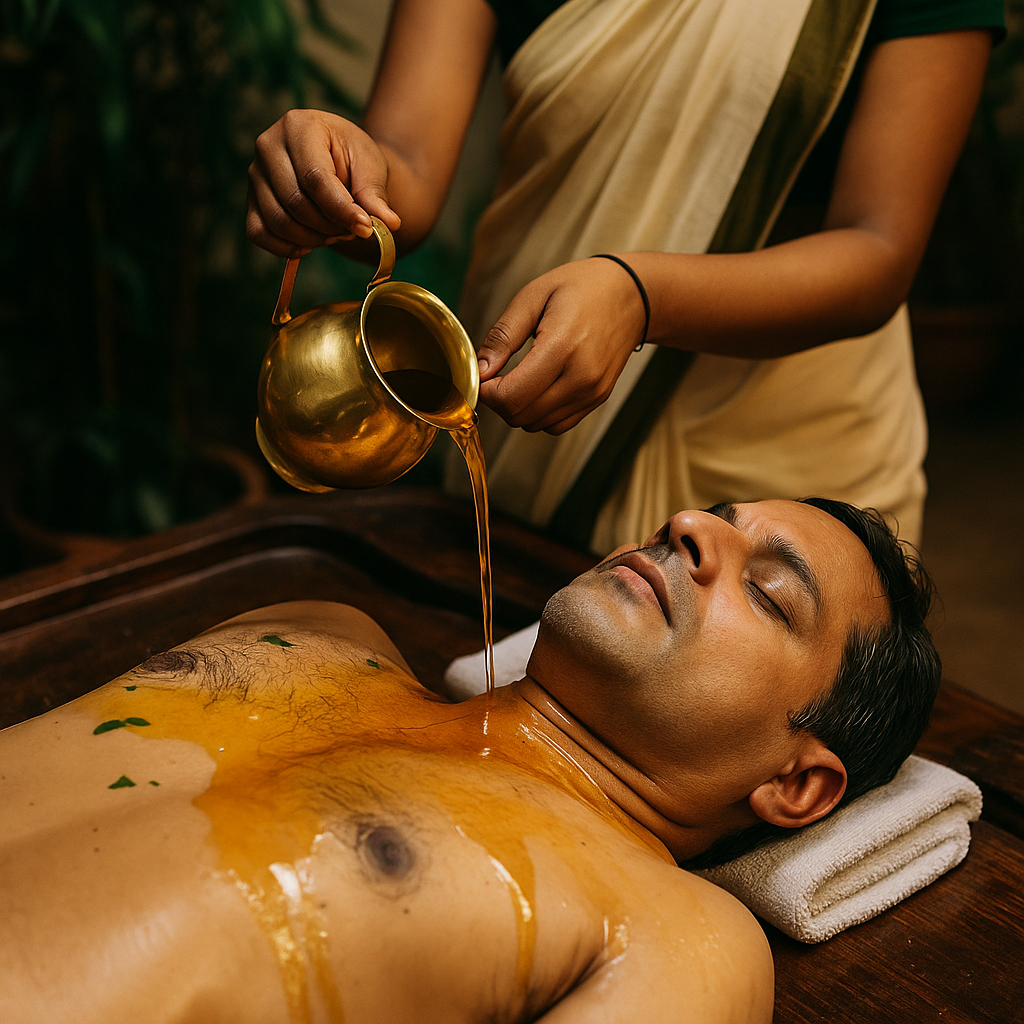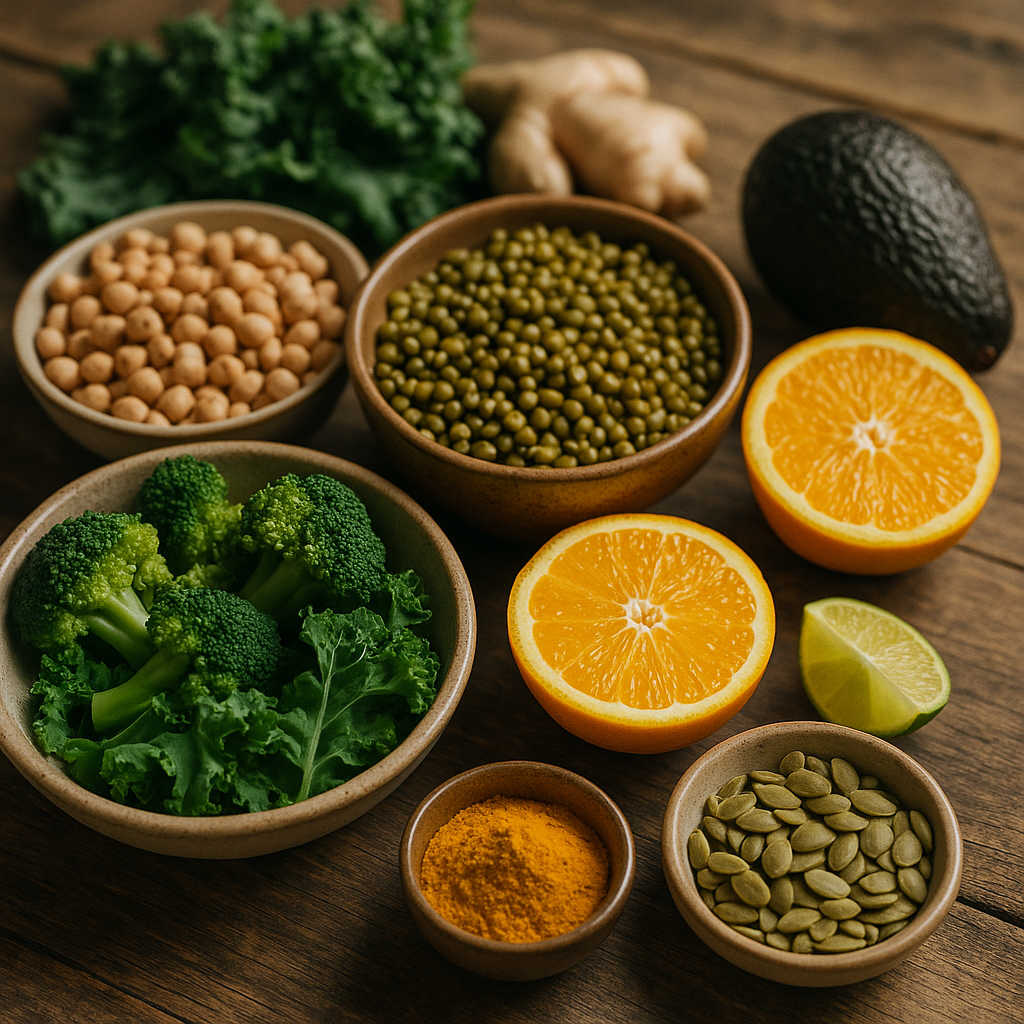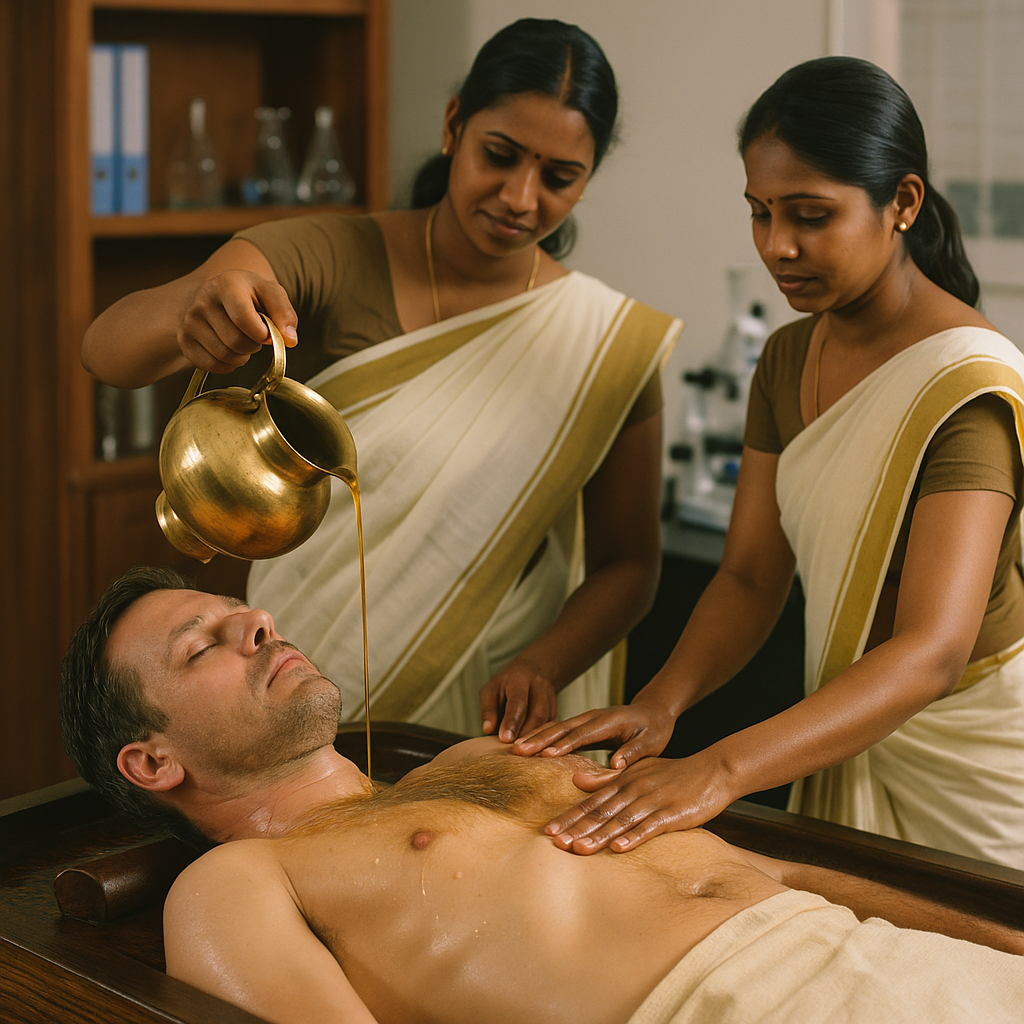Ask Ayurvedic doctor a question and get a consultation online on the problem of your concern in a free or paid mode. More than 2,000 experienced doctors work and wait for your questions on our site and help users to solve their health problems every day.
Shop Now in Our Store
Pizhichil Benefits: Why This Ancient Oil Bath Therapy Still Matters Today

Introduction to Pizhichil Benefits
Ever heard someone rave about lying in a warm stream of oil while four people gently massage you in rhythm? Sounds indulgent, right? But in Ayurveda, this isn’t luxury—it’s medicine. The therapy is called Pizhichil (pronounced something like "pee-zhi-chil"), and trust me, it’s not just some ancient wellness trend revived for Instagram aesthetics. It’s deeply rooted in healing, and—yes—its benefits are legit, especially when done right.
So what exactly is Pizhichil?
Pizhichil is a traditional Ayurvedic therapy that combines two powerful treatments: Snehana (oil massage) and Swedana (sudation or induced sweating). In simple terms, warm medicated oil is continuously poured over the body in a rhythmic manner while simultaneously being massaged in. The result? A deeply detoxifying, restorative experience that doesn’t just relax your muscles—it aims to balance your doshas, heal chronic conditions, and even support emotional release.
Now, I know how that might sound. Like, okay… hot oil and massage. Big deal, right? But this isn’t your average spa treatment. The oils are infused with herbs tailored to your specific body type (Prakriti), and the whole process is done under the supervision of trained Ayurvedic practitioners. There’s a level of intentionality here that Western massage therapy just doesn’t typically include.
Why does this matter?
Because the whole point of Ayurveda is to restore balance. Your body isn’t just bones and organs—it’s energy, temperament, digestion, sleep, emotions… all of it. And Pizhichil targets everything at once. No exaggeration. People turn to it for arthritis, paralysis, insomnia, skin issues, even stress-related infertility. It's especially renowned for rejuvenation and pain relief.
By the end of this article, you’ll understand:
-
Where Pizhichil comes from (spoiler: it’s older than most empires),
-
What makes it such a potent therapy (hint: it’s not just the oil),
-
Who should try it—and who absolutely shouldn’t,
-
How to make sure you’re getting the real thing (because, yes, there are knockoffs),
-
And how modern science is catching up to what Ayurveda knew centuries ago.
Let’s dive into this messy, fragrant, slippery world of warm oils and ancient wisdom.

History and Origin of Pizhichil Benefits
Ayurveda doesn’t do “new.” Every method, herb, or ritual has lineage. Pizhichil, especially, carries the weight of centuries. It's a therapy that came not just from observation but deep, experiential understanding of how the human body interacts with nature, temperature, touch, and time.
Historical Background and Roots of Pizhichil
Pizhichil originated in Kerala, the lush, coastal cradle of classical Ayurveda. The name itself comes from the Malayalam words “Pizhi” (to squeeze) and “Chil” (to pour), which is—more or less—what’s happening during the treatment.
There’s this old belief that the therapy was first reserved for royalty. In fact, it’s sometimes still called “the treatment of kings” (Raja Snana). Imagine a royal lying down on a teakwood table, golden oil dripping in synchronized streams, while Vaidyas (Ayurvedic doctors) chant softly in the background. Not a bad way to address back pain, huh?
But this wasn’t just pampering. Kerala’s humidity and tropical illnesses demanded creative ways to heal without triggering Pitta imbalances (which heat therapies often do). Pizhichil was developed as a "cooler" way to induce sweat—safely—for those with sensitive constitutions.
Ayurvedic Textual References about Pizhichil
You won’t find the exact word “Pizhichil” in the ancient Ayurvedic scriptures like Charaka Samhita or Ashtanga Hridayam. It’s more of an evolved, region-specific adaptation of Sarvangadhara (streaming of medicated oils over the entire body). Sarvangadhara is explicitly mentioned in classic texts as a part of Purva Karma—the preparatory stage before Panchakarma detox.
Texts describe this oil-bath technique as ideal for Vata disorders, neuro-muscular conditions, and rejuvenation therapy (Rasayana). So while the name may be modern, the method is classically Ayurvedic.
Traditional Use and Evolution of Pizhichil
Over time, Pizhichil became a cornerstone of Kayachikitsa—internal medicine in Ayurveda. It transitioned from royal palaces into healing centers, from rare to essential. Even now, in traditional Ayurvedic hospitals across Kerala, it’s used for serious conditions like hemiplegia, spondylitis, and chronic fatigue syndrome.
The method has evolved, sure. Some clinics now use mechanized oil-heating devices (which honestly feel a little sterile). But the best places? Still do it the old way—hand-warmed oils, sung mantras, and exacting massage protocols passed down through generations.
And just like that, this ancient ritual of healing continues—drip by sacred drip.
Purpose and Benefits of Pizhichil
Why would someone let themselves be drenched in liters of warm herbal oil for an hour? Like, repeatedly?
Well, that’s the thing about Pizhichil—it’s not just a feel-good therapy. It serves a purpose. Or, actually, many purposes.
Physical Health Benefits of Pizhichil
Let’s start with the obvious. Pizhichil is fantastic for the body. It improves circulation, deeply nourishes the skin, and relaxes stiff joints and muscles. But that’s just the beginning.
People with arthritis, sciatica, spondylitis, and even neurological issues like hemiplegia have reported significant relief after a proper course of Pizhichil. It’s also used to help those recovering from strokes or suffering from muscular dystrophy. Sounds like a lot? That’s because the therapy combines warmth, herbal medicine, and sustained touch in a way that penetrates deeper layers of tissue.
And weirdly enough, it's not just about what it does, but how long it does it. The constant pouring of oil over your body for 45–60 minutes creates a deeply sustained thermal effect, unlike a quick massage or heat pad. It softens, loosens, detoxifies.
Mental and Emotional Benefits of Pizhichil
This is the part people don’t talk about enough.
That constant stream of oil? The way it follows your body’s curves and never stops for a second? It’s incredibly calming—almost hypnotic. I’ve heard someone say it felt like "being returned to the womb." Sounds dramatic, but there’s truth in it.
Pizhichil helps with anxiety, burnout, insomnia, grief. Not because it’s some miracle cure, but because it forces your nervous system to shut up and listen. You stop thinking. You just feel.
In an overstimulated world, that’s healing in itself.
How Pizhichil Balances the Doshas (Vata, Pitta, Kapha)
Let’s talk doshas. Ayurveda 101: you’ve got Vata (air/space), Pitta (fire/water), and Kapha (earth/water). Imbalances in these energies lead to disease.
Pizhichil mainly targets Vata disorders. And that makes sense—Vata governs movement, nerves, anxiety. It’s cold and dry. What counters that? Warm, unctuous oil.
But interestingly, Pizhichil also benefits certain Pitta conditions when carefully managed. As long as the oil and temperature are chosen with care, it won’t overheat the system. Kapha types might need some moderation—too much oil could feel sluggish—but again, that's where a skilled Vaidya (Ayurvedic practitioner) makes all the difference.
Detailed Procedure and Steps of Pizhichil
You don’t just show up and get dunked in oil. There’s a sequence—one that matters, a lot. Pizhichil is choreographed, not improvised.
Preparation for Pizhichil Procedure
Before the actual therapy, there’s an evaluation. Your prakriti (body constitution), vikriti (current imbalance), and symptoms are assessed. Then the oil is selected—often sesame-based for Vata, but sometimes coconut or other bases depending on your needs.
You’re also prepped with mild abhyanga (oil massage) and maybe even internal oleation (taking ghee or oils orally) depending on the protocol.
And the room? It’s not some brightly lit spa. It’s warm, dim, often with gentle chanting or natural sounds in the background. This is sacred space, not just clinical space.
Step-by-step Guide of Pizhichil Procedure
Here’s roughly how it flows:
-
You lie on a special wooden table—flat, polished, and usually carved from medicinal trees like neem or aragwadha.
-
Two or four therapists work in unison. Yes, in unison. It’s like a well-practiced dance.
-
Warm medicated oil is continuously poured over your body using cloth bundles or special vessels, starting from the neck down.
-
The oil isn’t just poured. It’s massaged in simultaneously, with specific strokes based on your body type and condition.
-
The process continues for 45 to 60 minutes, with frequent checks to maintain the perfect oil temperature.
And during it all? You’re mostly silent. Just breathing, receiving, letting go.
Duration and Frequency Recommendations for Pizhichil
One-off sessions are nice, sure. But the real results? They come with a course—usually 7, 14, or 21 days depending on what you’re treating.
Some people even do it seasonally as part of their Ayurvedic maintenance routine. Sort of like a “body reset.” The sweet spot tends to be a 14-day course, especially for chronic conditions.

Herbs, Oils, and Ingredients Used in Pizhichil
Not all oils are created equal. And in Pizhichil, the choice of oil can literally make or break the therapy.
Key Herbs and Oils Essential for Pizhichil
Most commonly, the base is sesame oil—warm, penetrating, and Vata-pacifying. But coconut oil, castor oil, or even ghee might be used depending on your dosha.
Now, the herbs infused in these oils? That’s where the magic happens.
-
Ashwagandha: Strengthening and nerve-tonic
-
Bala: Anti-inflammatory and muscle-soothing
-
Sahachara: Great for joint pain and mobility
-
Kottamchukkadi: Popular blend for aches and stiffness
-
Dhanwantharam Thailam: A powerful multi-herbal oil often used in Pizhichil, especially for post-natal care
These aren’t just thrown in. They’re boiled into the oil through a slow, painstaking process that can take hours—or even days.
Benefits and Roles of Specific Ingredients in Pizhichil
-
Ashwagandha boosts stamina and calms the nervous system.
-
Bala is particularly good for neuro-muscular issues—think paralysis or nerve weakness.
-
Sahachara works wonders on degenerative joint conditions.
-
Turmeric may be added for skin conditions.
-
Manjistha is cooling and helps with lymphatic drainage.
Each combination is tailored. There’s no "one-size-fits-all Pizhichil oil." If someone offers that, be suspicious.
Where and How to Source Quality Ingredients for Pizhichil
This part’s tricky. You want authentic, traditionally prepared oils—not mass-produced stuff with synthetic additives.
Best bet? Find an Ayurvedic pharmacy or practitioner you trust. In Kerala, companies like Kottakkal Arya Vaidya Sala and Vaidyaratnam produce legitimate formulations. Online options exist, but be super careful—lots of fake “Ayurvedic” oils out there.
And honestly? If you’re doing Pizhichil, let the clinic handle it. A good Panchakarma center will source and prepare everything properly.
Indications and Contraindications for Pizhichil
Pizhichil is powerful, but it’s not for everyone. Knowing when and for whom it works is as important as knowing how it works.
Health Conditions and Symptoms Indicating Pizhichil
-
Rheumatoid arthritis
-
Osteoarthritis
-
Sciatica
-
Frozen shoulder
-
Neurological disorders (like facial palsy, hemiplegia)
-
Insomnia
-
Anxiety and stress
-
Chronic fatigue
-
Post-natal recovery
-
Skin dryness and psoriasis (in select cases)
It’s especially indicated for chronic Vata issues—conditions marked by dryness, pain, weakness, or nerve dysfunction.
Potential Risks and Contraindications of Pizhichil
Now the flip side. If done wrong—or on the wrong person—Pizhichil can worsen conditions.
Avoid it if you:
-
Have a high Pitta imbalance (too much internal heat)
-
Are running a fever
-
Have open wounds or infections
-
Are in the early stages of cold/flu
-
Suffer from very high cholesterol (some oils might exacerbate it)
-
Are pregnant (unless under very specific care)
It’s also not ideal for people who hate being oily. Seriously—this therapy is slippery. If you can’t relax into that, the mental benefits might backfire.
Who Should Avoid Pizhichil or Seek Expert Advice
Anyone with complex conditions—autoimmune disorders, cardiovascular disease, epilepsy—should talk to a knowledgeable Ayurvedic doctor first. Not because Pizhichil can’t help, but because it has to be done with serious precision.
In Ayurveda, even the right therapy at the wrong time is still the wrong therapy.
Aftercare and Post-procedure Recommendations for Pizhichil
So, you’ve just had a Pizhichil session. You’re oily, sleepy, maybe even a bit emotional. What now? Well, Ayurveda doesn’t just leave you hanging. The after matters just as much as the during.
Recommended Lifestyle Adjustments After Pizhichil
Pizhichil has this subtle effect where you suddenly want to slow down. Honor that.
For at least 24–48 hours after the session (and ideally throughout the treatment course), keep things low-key:
-
Avoid cold wind, heavy exercise, and strong emotional stimulation.
-
Don’t immediately go back to work or rush into traffic.
-
Try to rest, reflect, journal, or even nap.
You just invited every cell in your body to soften. Don’t tense them up again with noise and speed.
Diet and Nutrition Guidelines Following Pizhichil
You’ll be hungry—but it’s a delicate kind of hunger. Avoid heavy, fried, or cold foods. Instead, go for:
-
Warm, lightly spiced khichdi
-
Soups made with moong dal, vegetables
-
Herbal teas (especially cumin-coriander-fennel)
If your practitioner has you on a Panchakarma regimen, follow their post-treatment dietary rules to the letter. It helps your gut reset and absorb all the goodness you just soaked in.
Oh—and hydrate. Gently. No chugging ice water.
Common Mistakes and Precautions Post Pizhichil
A few things people often mess up:
-
Showering right after the treatment (huge no-no; wait a few hours, and even then use warm water only)
-
Going straight to a cold room or AC blast
-
Skipping meals or fasting out of some weird “cleansing” logic
Pizhichil is nourishing, not draining. You’re not detoxing into emptiness—you’re replenishing. Treat your body like it just went through sacred work. Because it did.

Scientific Studies and Modern Research on Pizhichil
Now, if you’re the kind of person who needs to see journal citations before believing in warm oil therapy—fair enough. Let’s go there.
Research Validating the Benefits of Pizhichil
While Pizhichil itself hasn’t been the subject of massive global trials (yet), various studies on Abhyanga and Snehana Swedana—the foundational elements of Pizhichil—show promising results.
-
A 2011 study in the Journal of Ayurveda and Integrative Medicine noted significant improvement in Vata disorders with regular oil therapies.
-
Neurological rehab centers in Kerala have documented case studies where hemiplegic patients showed faster motor recovery with Pizhichil support.
-
Another small trial found that Pizhichil improved range of motion and pain scores in people with osteoarthritis.
No, it’s not yet "FDA-approved" therapy—but Ayurveda doesn’t wait for bureaucracy to heal.
Clinical Trials and Evidence Supporting Pizhichil
A few Ayurvedic institutions in India have begun structured clinical trials:
-
AVP Research Foundation published observational reports linking Pizhichil to improved outcomes in conditions like frozen shoulder and insomnia.
-
Kottakkal Arya Vaidya Sala's internal studies suggest it enhances parasympathetic activity—basically calming your nervous system down in a measurable way.
We still need more large-scale, double-blind studies. But the anecdotal and observational evidence? Overwhelming.
Comparison Between Ayurvedic and Conventional Methods Related to Pizhichil
Compare it to, say, a steroid injection for joint pain. Sure, that might work faster. But Pizhichil works deeper. It supports tissue regeneration, nerve health, and emotional equilibrium. Not just symptom relief.
It’s slow medicine. Gentle medicine. But lasting medicine.
Real-Life Testimonials and Experiences with Pizhichil
Alright, numbers aside—what’s it actually like for real people?
Patient Stories and Experiences with Pizhichil
Ramesh, 52, from Mumbai:
“After my stroke, I couldn’t move my right hand properly. Physio helped, but it was Pizhichil that gave me real relief. After 14 sessions, my grip strength came back, and I started sleeping again.”
Anjali, 34, from London:
“I did a 7-day Pizhichil course during a burnout sabbatical in Kerala. On day 3, I cried for no reason. On day 5, I laughed like I hadn’t in years. I came back to myself. That’s the best way I can say it.”
Rita, 63, from Bangalore:
“My knees hurt constantly. Nothing worked—not even surgery. A Vaidya recommended Pizhichil. I didn’t expect much, but after two weeks? I could walk stairs without pain. I’m still surprised.”
Results Achieved and Realistic Expectations from Pizhichil
Not a miracle. But close.
If done properly, you can expect:
-
Reduced joint pain
-
Better sleep
-
Calm nerves
-
Brighter skin
-
More energy
-
Improved digestion
But it’s not instant gratification. It’s slow, steady, whole-body healing.
Conclusion and Final Thoughts on Pizhichil Benefits
Pizhichil is one of those Ayurvedic treatments that sounds too simple to be profound—warm oil and massage, right? But when you actually experience it, you realize: it’s not the oil, it’s the intent. The precision. The centuries behind it.
It’s about nourishing what’s dry, warming what’s cold, calming what’s frantic.
For anyone dealing with chronic pain, nervous system overload, emotional burnout, or just an unshakeable sense of something’s off—Pizhichil offers something modern medicine often can’t: resonance. A way to reset your rhythms, not just your symptoms.
So if you’re curious, skeptical, or secretly desperate for deep rest… give it a chance. But don’t DIY it. Seek out experienced Ayurvedic practitioners. Ask questions. Do it with care.
And if you’re wondering where to begin? Start by booking a personalized consultation with trusted professionals at Ask-Ayurveda.com. They’ll guide you toward a path that’s not just traditional—but also totally tailored to you.
Frequently Asked Questions (FAQ) About Pizhichil Benefits
1. Is Pizhichil safe for everyone?
Not quite. It’s safe when done under supervision, but people with fever, infections, or high Pitta should avoid it. Always consult an Ayurvedic doctor first.
2. How many sessions of Pizhichil are needed?
It depends on your condition. For general rejuvenation, 7 sessions might suffice. Chronic conditions may require 14–21 sessions, done daily.
3. Can Pizhichil help with mental health issues like anxiety?
Absolutely. The rhythmic pouring of warm oil soothes the nervous system, often reducing anxiety, insomnia, and emotional restlessness.
4. Will I gain weight from all that oil?
Nope. Despite popular fears, Pizhichil doesn’t lead to weight gain. In fact, it can support metabolism and improve circulation, helping with overall vitality.
5. Can I do Pizhichil at home?
Honestly? Not really. It requires multiple trained hands, proper oil temperature control, and Ayurvedic evaluation. Best done at a certified clinic.
6. What oil is used in Pizhichil?
The oil varies. Common ones include Dhanwantharam Thailam, Kottamchukkadi, and Bala Thailam—each infused with specific herbs depending on your dosha.
This article is checked by the current qualified Dr Sujal Patil and can be considered a reliable source of information for users of the site.

